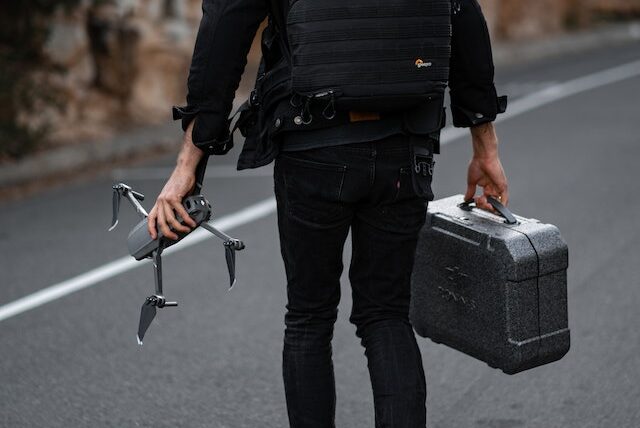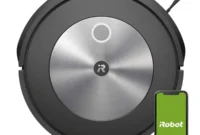Drones have become increasingly popular among hobbyists, photographers, and professionals alike. These unmanned aerial vehicles allow us to capture breathtaking aerial footage and explore new perspectives. However, owning a drone also comes with the responsibility of protecting this valuable piece of technology. Choosing the right carrying case for your drone is essential to safeguard it from damage during transportation and storage. In this article, we will explore the key factors to consider when selecting a carrying case and provide recommendations to help you make an informed decision.

Importance of Protecting Your Drone
Drones are delicate devices that require proper protection to ensure their longevity and functionality. Without a suitable carrying case, your drone is vulnerable to potential risks such as impact, dust, moisture, and temperature changes. Transporting your drone without adequate protection can lead to damaged propellers, broken components, or even complete device failure. Additionally, a protective carrying case allows for organized storage and easy access to your drone and its accessories, saving you time and effort.
Factors to Consider When Choosing a Carrying Case
- Durability and Protection: The primary purpose of a carrying case is to protect your drone from external elements. Look for a case made of sturdy materials that offer impact resistance and shock absorption. A protective exterior shell combined with cushioned foam inserts will provide optimal protection.
- Size and Compatibility: Ensure that the carrying case is specifically designed to fit your drone model. It should have a snug fit to prevent unnecessary movement and potential damage. Consider the dimensions and weight of your drone, as well as any additional accessories you plan to carry.
- Organization and Storage: Look for a carrying case that offers ample storage space and compartments to keep your drone and its accessories well-organized. Pockets, straps, and dividers can help secure smaller items such as batteries, cables, and spare propellers.
- Portability and Convenience: Evaluate the ease of carrying the case. It should have a comfortable handle or shoulder strap for convenient transportation. Consider the weight of the case itself, especially if you plan to carry it for extended periods.
- Hard Cases vs. Soft Cases: Pros and Cons:
Hard Cases
Hard cases are typically made of sturdy materials like plastic or metal, offering excellent protection against impacts. They provide a rigid structure and are often water-resistant or waterproof. However, hard cases can be bulkier and heavier than soft cases, making them less convenient for travel or longer hikes.
Soft Cases
Soft cases are made of durable fabric materials such as nylon or polyester. They are lightweight, compact, and offer excellent portability. Soft cases often feature padded interiors and removable dividers for customization. While they provide decent protection against scratches and minor impacts, they may not offer the same level of protection as hard cases.
- Foam Inserts and Customization Options: Foam inserts are a crucial feature in carrying cases as they provide cushioning and prevent your drone from moving around. Some cases come with pre-cut foam inserts designed specifically for popular drone models. Alternatively, you can opt for customizable foam inserts that allow you to create a tailored compartment layout for your drone and accessories.
- Waterproof and Weatherproof Features: If you plan to use your drone in various weather conditions or near water bodies, consider a carrying case with waterproof or weatherproof features. These cases have tight seals, secure latches, and may include a pressure relief valve to protect your drone from water, dust, and humidity.
- TSA-Friendly Cases for Travel: If you frequently travel with your drone, opt for a carrying case that is TSA-friendly. These cases meet the Transportation Security Administration (TSA) requirements and allow for hassle-free security checks at airports. Look for cases that offer quick access to your drone without the need for disassembly.
- Price Range and Budget Considerations: Carrying cases are available in various price ranges. Consider your budget and prioritize features based on your specific needs. While it’s essential to invest in a quality case, there are options available to suit different budgets.
- Brand Reputation and Customer Reviews: Research and evaluate different brands and their reputation for manufacturing reliable and durable carrying cases. Read customer reviews and ratings to gain insights into the experiences of other drone owners. Positive feedback and recommendations can help you make an informed decision.
- Additional Features to Look for:
Locking Mechanisms
A carrying case with a reliable locking mechanism adds an extra layer of security. Look for cases with secure latches, combination locks, or even TSA-approved locks to prevent unauthorized access to your drone.
Wheels and Handles
If you have a larger drone or plan to carry multiple drones, a case with wheels and a telescoping handle can greatly enhance portability and ease of transportation.
Warranty and Customer Support
Consider the warranty offered by the manufacturer and the quality of their customer support. A reputable brand with excellent customer service can provide peace of mind and assistance in case of any issues or concerns.
Top Recommendations for Drone Carrying Cases
- Case 1: [Brand Name]
- Description of the case and its key features.
- Positive customer reviews or testimonials.
- Price range and availability.
- Case 2: [Brand Name]
- Description of the case and its key features.
- Positive customer reviews or testimonials.
- Price range and availability.
- Case 3: [Brand Name]
- Description of the case and its key features.
- Positive customer reviews or testimonials.
- Price range and availability.
Conclusion
Choosing the right carrying case for your drone is crucial to protect it from potential damage and ensure convenient transportation. Consider factors such as durability, size compatibility, organization, portability, and customization options when making your decision. Evaluate the pros and cons of hard cases and soft cases, as well as additional features like foam inserts, waterproofing, TSA-friendliness, and locking mechanisms. Finally, research reputable brands and read customer reviews to make an informed purchase. By investing in a high-quality carrying case, you can safeguard your drone investment and enjoy worry-free flights.
FAQs (Frequently Asked Questions)
- What is the purpose of a drone carrying case? A drone carrying case is designed to protect your drone from damage during transportation and storage. It provides cushioning, organization, and convenient access to your drone and its accessories.
- Can I use a regular backpack to carry my drone? While a regular backpack may offer some basic protection, it may not provide the necessary cushioning or secure compartments to keep your drone and its accessories safe. It’s recommended to use a dedicated drone carrying case for optimal protection.
- Are all drone carrying cases waterproof? No, not all drone carrying cases are waterproof. However, some cases come with waterproof or weatherproof features to protect your drone from water, dust, and humidity. Consider your needs and the environments in which you will use your drone when choosing a carrying case.
- How much do drone carrying cases typically cost? The cost of drone carrying cases can vary depending on the brand, size, features, and overall quality. Entry-level cases can range from $20 to $50, while high-end cases with advanced features can cost upwards of $200.
- Can I use a carrying case for other equipment besides my drone? Yes, many carrying cases designed for drones can be versatile and used to transport other equipment such as cameras, lenses, or other delicate electronic devices. Ensure the case has customizable compartments and suitable protection for the specific equipment you intend to carry.


